When I walk Berkeley I imagine aggregations – a collection of photos of, say, quirky topiary.
There is another way that aggregations happen. I reflect on the photos I have, posts that I have made, and I see an aggregation to be made. That was the case here. Here I aggregate mostly previously published photos of outbuildings (I am pretty sure it is a closed compound). A new way of looking at them. An inspiration for behind your house? Recycled, re-purposed photos, a summer rerun?
Above, I start with my single favorite piece of quirky material culture in all of Berkeley, Bruce Dodd’s restored and renovated giant orange that was once an orange juice stand in the San Joaquin Valley.
This photograph was taken on August 5th. Many of the artists featured in the Quirky Berkeley book gathered at Dodd’s orange to celebration publication. Heyday’s Malcolm Margoliin is fourth from the left in the front row. Bruce Dodd is near the right end of the first row, wearing a black windbreaker over an orange shirt.
With the City of Berkeley relaxing rules surrounding “granny flats” or auxiliary dwelling units, these photos of outbuildings might inspire.
More photos? More photos! More photos:
This is Dick and Beany’s African mud hut in the backyard of their North Berkeley home. They have traveled to Africa for more than 50 years. They were inspired by the mud huts of Ghana. They built one.
Avi Black is inspired by Bali. He built this bale in his backyard. A bale is a Balinese wooden pavilion. It may be a drum pavilion (bale kulkul), a gamelan pavilion (bale gong), a meeting pavilion (wantilan), or a kitchen pavilion (bale perantenan).
Architects Karl Wanaselja and Cate Leger have positioned two shipping containers in an L-shape behind their McGee Street home and use them for offices. I did an entire post on shipping containers – here.
In 1998, Rob Garross bought and moved a Southern Pacific caboose to his driveway on Fifth Street. A caboose for an office! Ultimately old weird American. Ultimately romantic. Ultimately quirky.
Which brings us to yurts. That’s what the Turkic people call them. Mongolians call them gets. They are portable round tents used as a dwelling by nomads in the steppes of Central Asia. We first read about them in the Whole Earth Catalogue. They sounded cool.
I know of three yurts in Berkeley. There may be more. The yurt that is most visible from the street is on the 2600 block of San Pablo, west side of the street.
It is in the garden of Urban Adamah, which describes itself as “an educational farm and community center in Berkeley, California, that integrates the practices of Jewish tradition, sustainable agriculture, mindfulness and social action to build loving, just and sustainable communities.” They are moving to Harrison Street in West Berkeley, onto a two-acre lot being designed by David Trachtenberg.
There is a yurt behind 1636 Bonita, visible slightly from Virginia. Nobody was home when we tried. Will try again.
We had better luck at 1841 Addison.
Andrew O’Shea and Tracy Bailie live here with their daughter Sophia O’Shea, a rising sophomore at Berkeley High. My daughter Charlotte is in classes with Sophia at Berkeley High and they have played soccer together over the years. Small Quirky World!
The elephants painted on the front of the house are a relic of two owners ago – Jeffrey Masson, author of When Elephants Weep.
The yurt in the backyard was there when O’Shea and Bailie moved in 12 years ago. They both work for Pearson PLC, headquarters in London and the largest education company and the largest book publisher in the world. They were told that Masson used the yurt as a writing studio.
It was raining the Saturday that we visited. The rain on the canvas roof was a comfort.
One last stop in Berkeley. The same drizzling Saturday of the yurt visit, Colleen Neff and I knocked on the door at 2155 Vine.
Our intention was to learn about the flying saucer and alien in the front yard. We met the home owner George McNeil and an hour later left with a wonderful sense of what Berkeley is. Howie Gordon told me “You never know what is behind these Berkeley doors.” Smart man that Howie Gordon.
I am working on a post about 2155 Vine and George McNeil and Joanna Salska McNeil, but for these purposes let me show you their outbuilding – a tree house. A tree house that a person could sleep in. A tree house that persons have slept in:
I have photos of 23 other tree houses. They will be a post one day, but I doubt that any tree house in Berkeley will beat this as cool and quirky.
Debra Pughe on Amador has two admirable outbuildings. The first is a children’s clubhouse. Building it, Pughe was inspired by photographs of homes in disappearing rural Central Europe. She drew from Suzanne Slesin’s Mittel Europa: Rediscovering the Style and Design of Central Europe and Bert Teunissen’s Domestic Landscapes.
The second is a greenhouse which has become a land of fairies.
Wandering from the strict confines of Berkeley City Limits for the purposes of illustrating quirky outbuilding possibilities:
Mark Bulwinkle, the True North of Quirky Berkeley, lived in this teardrop trailer for a few years. It now is parked in the middle of his steel and metal sculpture garden on Hannah Street in West Oakland.
Donna Reynolds and Tim Racer make art and save dogs. They bought this almost-tiny-house in Yuba City (or was it Marysville?) and have it in their Oakland hills backyard as a guest house. Bulwinkle introduced me to them.
On a field trip to San Jose with Marcia Donahue, I saw two wonderful quirky out buildings.
At Cevan Forristt’s Asian-inspired house and garden is a guest house / studio / tea house. It’s really something.
Also in San Jose is Ted Fullwood’s house and back studio.
It is a studio for his ceramic work. Please – click on the photo to see it Much Bigger and check out the tile. Fullwood wanted three things from his studio: 1) High ceiling; 2) good natural light; and 3) Big monster tables that don’t jiggle. Fullwood uses what he calls the “patty-cake” method, and neither an extruder nor the pinch-and-coil method. He needs a sturdy table. The studio didn’t work out, didn’t pass the tests. But the tile is pretty incredible.
And speaking of tile, how about Laurel Skye’s workshop in Arcata?
Again – click on it – please. The tile work is astonishing.
And, speaking of workshops, there is the back outbuilding workshop of Patrick Amiot and Brigitte Laurent in Sebastapol in a backyard filled with outbuildings.
There are a couple of old Airstreams where daughters live:
There are freestanding outbuilding closets for the daughters:
And a grand outbuilding studio:
And, lastly, the field trip to Glen Ellen.
Mark Bulwinkle also introduced me to Susan Alexander and Tom Tollefsen of Glen Ellen. I visited. On the banks of the Sonoma Creek is a “bunkie” that Tollefsen designed. “Bunkie” is a term used in Canada for a small cabin, a term from Alexander’s youth and summers spent on the Georgian Bay. She wrote: “The cottage belonged to my uncle who was a professor at the University of Toronto. It was reached by boat and was on an island. No running water, outhouse and a little tiny cabin on the top of the island that my uncle went to be alone. It was a very special place which I loved.” This bunkie has a tiered roof that evokes a Thai temple. Summer night breezes, the creek a few feet down the hill – how perfect is this? How so very magnificent (a word that I don’t use casually) – a magnificent place to spend the night, no?
I showed the photos to my friend. He has a hankering for a bunkie. We have no stream in our backyard, but we do have night breezes. I know how strongly he feels about cabooses, so I am relieved that he now has his sights set on something less expensive and less space-consuming.
What about these photos, though, this recycling in a new aggregation?


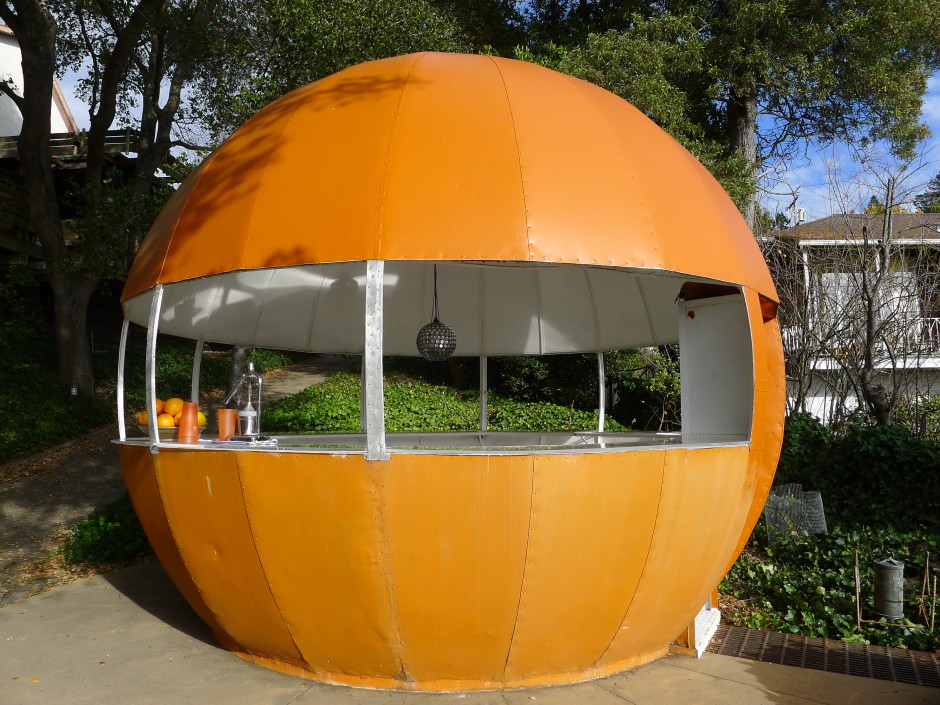


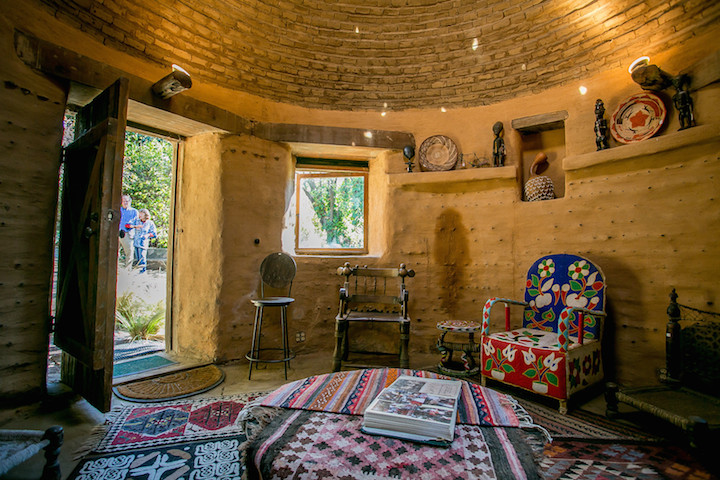
















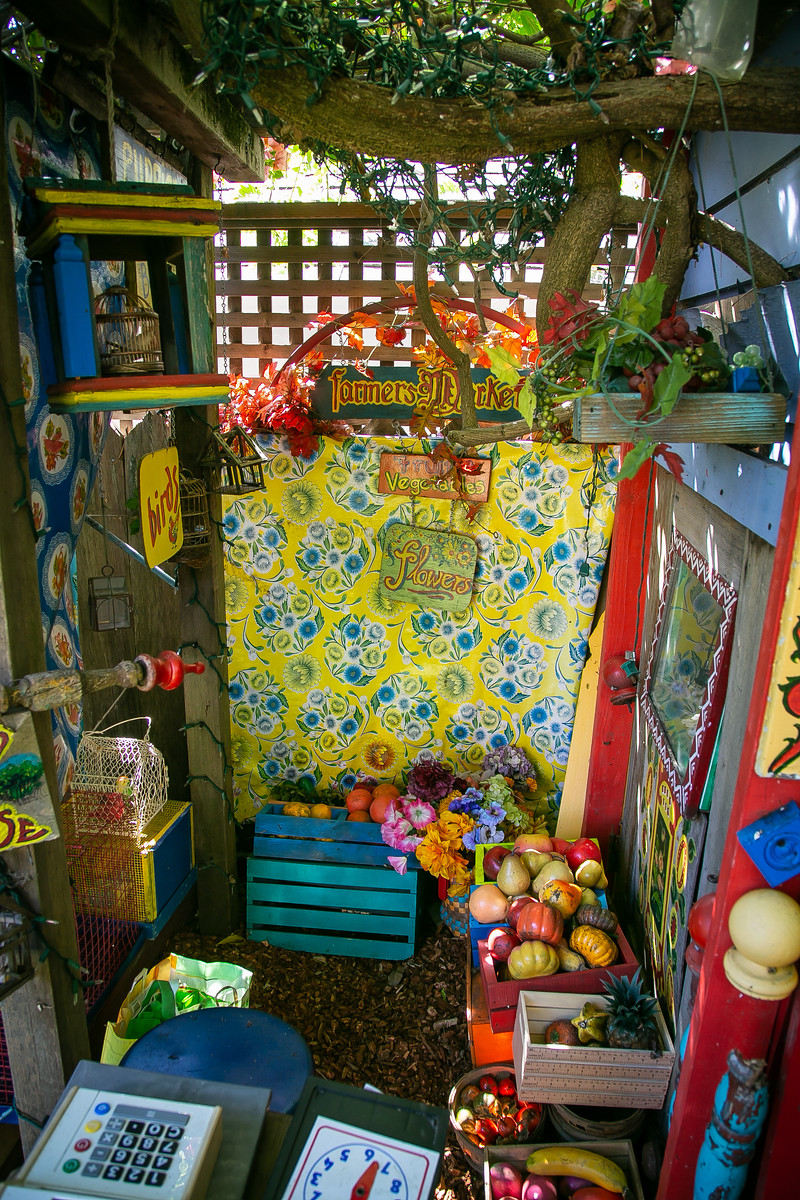

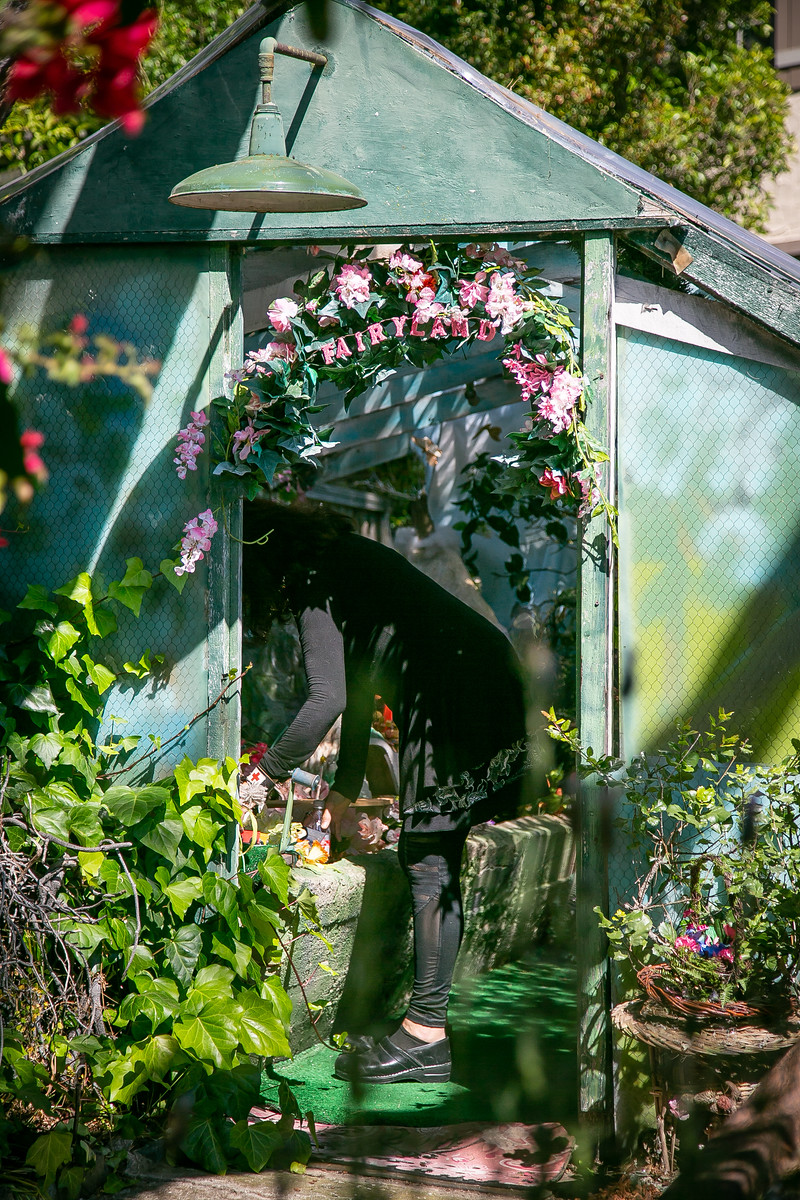













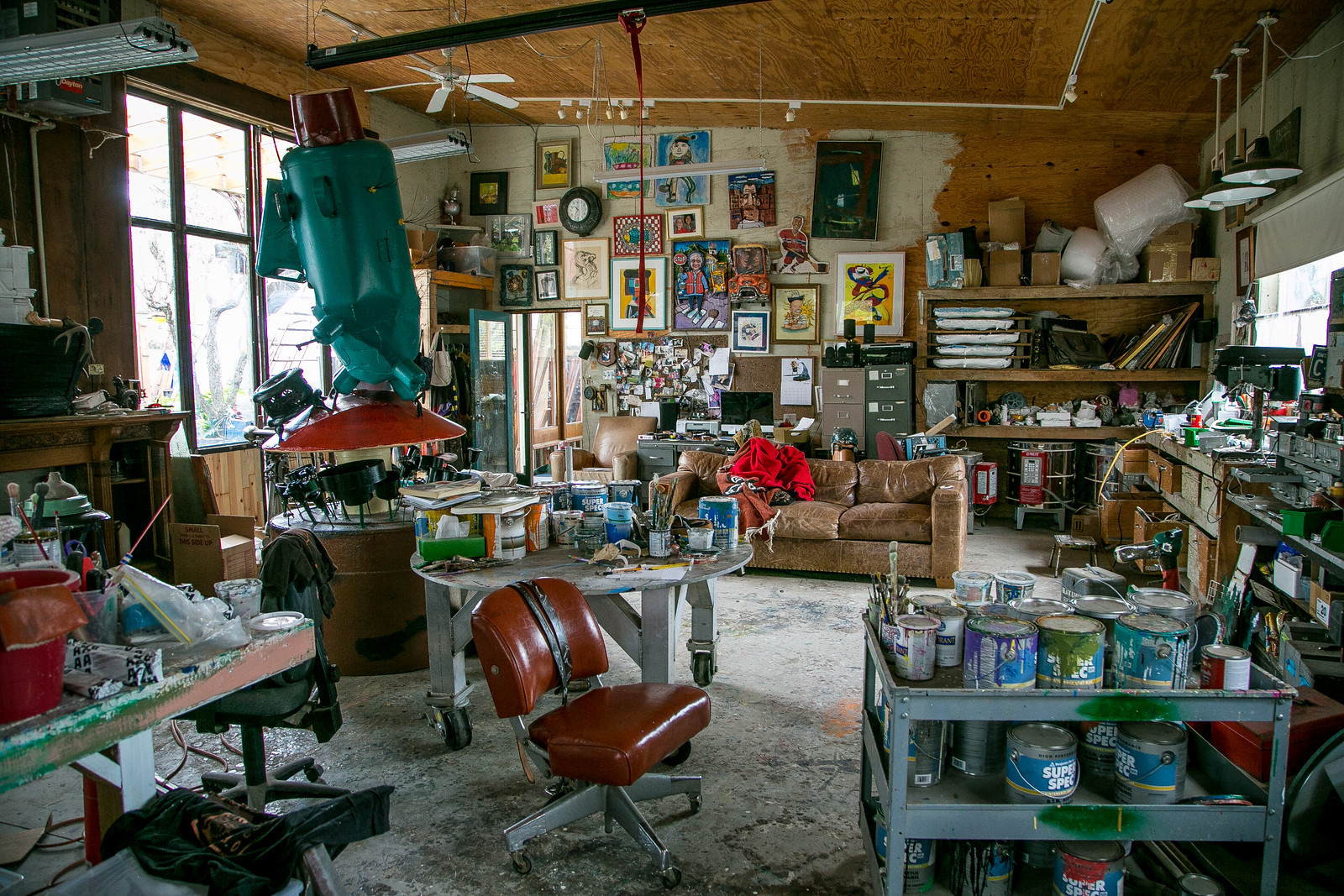



Pingback: Quirky Berkeley architecture | Holly Rose